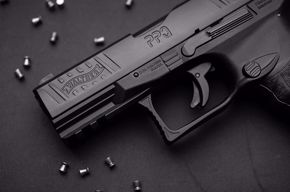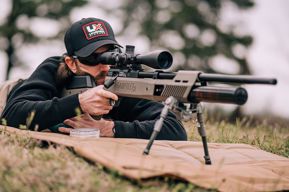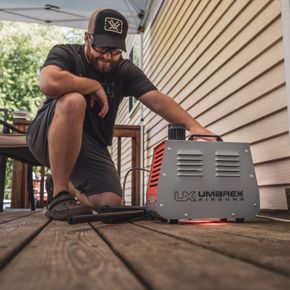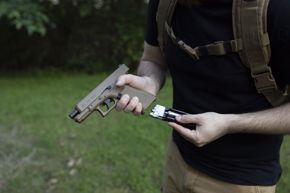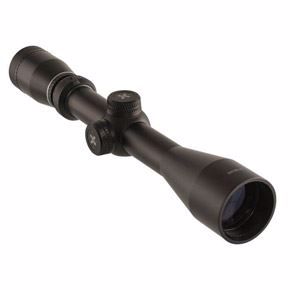I have nothing against iguanas, personally. The big lizards hardly offend me at all, in their natural habitat. But in the Florida Keys, where they are an invasive species, these little dinosaurs are becoming a very big problem. Females can pop out 76 eggs at a time, and they have no natural predators. There’s only one surefire way to get rid of them, and it is exactly what you’d expect.
What’s the best way to kill them? Some biologists from a big university in the state (one with an anthropomorphic reptile as a mascot) have taken to clubbing them. In some areas, Iguanas are that plentiful. Other Sunshine State residents have, for years, frozen them alive. They’d trap them and drop them in the deep-freeze. But that was ruled cruel and is now taboo.
Still, the problem persists. Killing the lizards is legal, though residents are encouraged to do it efficiently to prevent the Iguanas from suffering. In fact, the Florida Fish and Wildlife Conservation Commission encourages homeowners to kill them “whenever possible.” A traditional firearm is a logical choice, though many municipalities take a dim view of firearm usage, even when it is in support of conservation.
That hasn’t stopped some locals. As many properties in the Keys are on the water, it can be perfectly safe to pop off a few shots. Locals, most of whom want the iguana population eradicated, tend to look the other way when they hear an errant rimfire report. But there is a better, more legal, option.
Those who want to stay on the right side of the law rely on air guns. The .177 moves fast enough to kill an iguana, but you have to have incredible aim. The death must be humane. An underpowered .177 pellet will simply bounce off. Even pellets that are smoking can bounce off of the thick skin of an iguana’s head. With these smaller pellets, shot placement is everything—and insanely complicated.
The .22 pellets are also a solid option. The extra mass helps with some kill shots, but it still isn’t foolproof. If you pop an iguana in the head with a .22 pellet, you will likely stun it. And when it wakes up again, it won’t be happy.
 As such, I was looking for something a bit heftier. Umarex now makes the Gauntlet in .25 caliber. The muzzle velocity on a 25-grain pellet is well north of 800 fps, making this an effective round for a good-sized reptile. More on that in a moment.
As such, I was looking for something a bit heftier. Umarex now makes the Gauntlet in .25 caliber. The muzzle velocity on a 25-grain pellet is well north of 800 fps, making this an effective round for a good-sized reptile. More on that in a moment.
First, let’s talk tactics. Driving into the Keys, I saw iguanas lurking in numerous public places. They love the warmth of sunny asphalt and like to bake themselves on the side of the road. There, cars frequently hit them.
I’d arranged to hunt on several privately owned properties in the middle Keys. But the weather in March was uncooperative. It rained one day. The next was socked in and unseasonably cold. The coldblooded lizards were a no-show.
The third day was warmer. I parked on the patio of a palatial house and watched the seawall next to an isolated clump of mangrove. There were iguanas there. I could see the damage they were doing to the landscaping (where they eat the flowers) and to the property (where they burrow under sidewalks, boat ramps and docks). And they leave the biggest piles of lizard droppings I’ve ever seen.
But the droppings were much more prevalent than the iguanas themselves, at least from where I was sitting. I saw one in the four hours that I reclined on the lanai. He popped his head up from behind a cut block of stone and gave me a good long look. Before I could get the Gauntlet to my shoulder, he was gone.
 I could have been faster. The iguana was certainly fast and seemed to know that I meant to kill him. The homeowner regularly takes potshots at them with a .177 and has killed a number of them—enough for the surviving iguanas to know that anyone in the yard is a potential threat.
I could have been faster. The iguana was certainly fast and seemed to know that I meant to kill him. The homeowner regularly takes potshots at them with a .177 and has killed a number of them—enough for the surviving iguanas to know that anyone in the yard is a potential threat.
That afternoon, the sun came out. Iguanas appeared like slow-moving zombies—but only in areas where I wasn’t allowed to hunt. That’s when I had another idea. The iguanas in the mangrove on the property wouldn’t show themselves on the yard side. But there was another side to the stand of mangroves. All I needed was to approach the property from the water.
The yard formed a peninsula of sorts, so shooting from the water was still safe. The inlet cut down beside the house. I could shoot into the mangrove and any shot that made it through would still end up in the bay.
The water approach worked. The iguanas were incredibly well camouflaged in the leaves, but they were there. They were accustomed to boats coming and going and paid no attention to me until I started shooting. I was close enough that I couldn’t use the scope on the Gauntlet (which was zeroed at 40 yards). Instead, I had to do some guesswork.
The first shot hit a fat iguana below his ribcage and killed him instantly. There was very little movement, and he simply slumped on the branch he’d been standing on. I didn’t think I’d hit him until I saw the size of the entry wound.
I pushed into the mangrove and picked him up in a snare. That scared the others into hiding, but I wanted to make sure he wasn’t suffering. He wasn’t. Half-an-hour later, I went back out in the boat and knocked off five more. Two were within reach. Three fell through the branches and into the water. My enthusiasm for fetching those was diminished by the nurse sharks and bull sharks that patrol these waters waiting for fisherman to discard fish heads and gut piles.
 In the course of an hour, I’d killed six of them. The Gauntlet was ideal. The gun will fire a string of 20 shots, maybe a few more, before the regulated shots begin to lose power. Gassing up again is a hassle, but the speed of the bolt-action during the hunt more than makes up for it. I had two mags and knew that I needed to top off when both were empty.
In the course of an hour, I’d killed six of them. The Gauntlet was ideal. The gun will fire a string of 20 shots, maybe a few more, before the regulated shots begin to lose power. Gassing up again is a hassle, but the speed of the bolt-action during the hunt more than makes up for it. I had two mags and knew that I needed to top off when both were empty.
And I’m not going to pretend like my shot placement was what I’d like. It wasn’t. Shooting a rifle from the shoulder, from the deck of a boat that is bobbing in the waves, isn’t easy. Take away the scope as you close on a moving target and you’ll get a sense of what I was up against.
The Gauntlet, though, provided solid kill shots. One of the homeowners had requested iguana skulls for a wind-chime she’s making. Headshots with the Gauntlet .25 tend to leave the skulls in a less-than-Pinterest condition.
The next day, as we prepared to hunt another area, the homeowner called again. More iguanas had emerged. The allure of the sun was too much. So rather than explore a new area, we returned to our first spot.
With the foreknowledge of their location, I was able to play the wind and get around them. I popped one from close to 50 yards out. My son, who was using the homeowner’s .177, dropped another in its tracks with a broadside shot through the eye socket from about 30 feet.
That was the only kill shot from the .177. The Gauntlet, though, was knocking them down with incredible efficiency.
If you get the chance to go, do. There’s no end to the recreational activities in the Keys. While fishing gets a ton of press, there’s not much info on how or where to hunt. The locals, though, are eager to be rid of this problem and the hunt, with the right gun, is incredibly fun.

